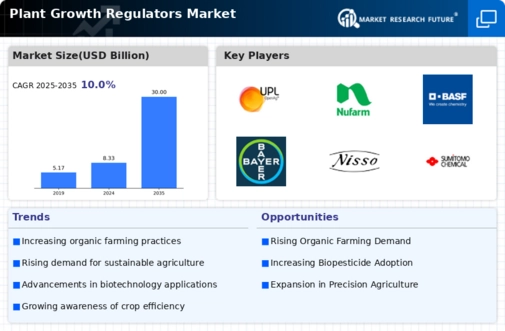North America Plant Growth Regulators Size
North America Plant Growth Regulators Market Growth Projections and Opportunities
Agricultural dominance in North America drives the plant growth regulators market. Plant growth regulators are in great demand to improve crop production, quality, and productivity in crop cultivation, horticulture, and specialty crops. Growing focus on sustainable agriculture shapes the market. Sustainable farming relies on plant growth regulators to optimise resource utilization, crop resilience, and environmental effect. Precision agriculture increases plant growth regulator demand. Variable rate applications and sensor-based monitoring work with growth regulators to enhance plant development and resource usage locally. Plant growth regulators are needed because North American fruit and vegetable consumption is growing. Plant growth, fruit quality, and post-harvest qualities are controlled by these regulators to meet local and international market demands. Environmental and safety laws and strict regulatory requirements affect the plant growth regulators market. Manufacturers must undergo regulatory clearance to assure product safety and effectiveness in North American agriculture. Biotechnology, genetic engineering, and other agricultural technologies affect plant growth regulator development and acceptance. New insights into plant physiology and signaling networks help create more effective and tailored growth regulators. Growing customer demand for organic products drives the organic farming plant growth regulator industry. These regulators assist organic farming and fulfill North American demand for organic goods by providing organic and sustainable crop management options. Climate change affects agriculture significantly. Plant growth regulators assist North American crops adjust to temperature and water changes, making them more climate-resistant. To advance plant growth regulator technology, agricultural research organizations, universities, and industrial partners must collaborate. Joint research creates new and better formulations, boosting North American farmers' uses and advantages. Intense rivalry among plant growth regulator producers and suppliers drives product innovation. Companies provide new formulations, improved effectiveness, and focused solutions for North American crops and growing circumstances to distinguish their products.













Leave a Comment